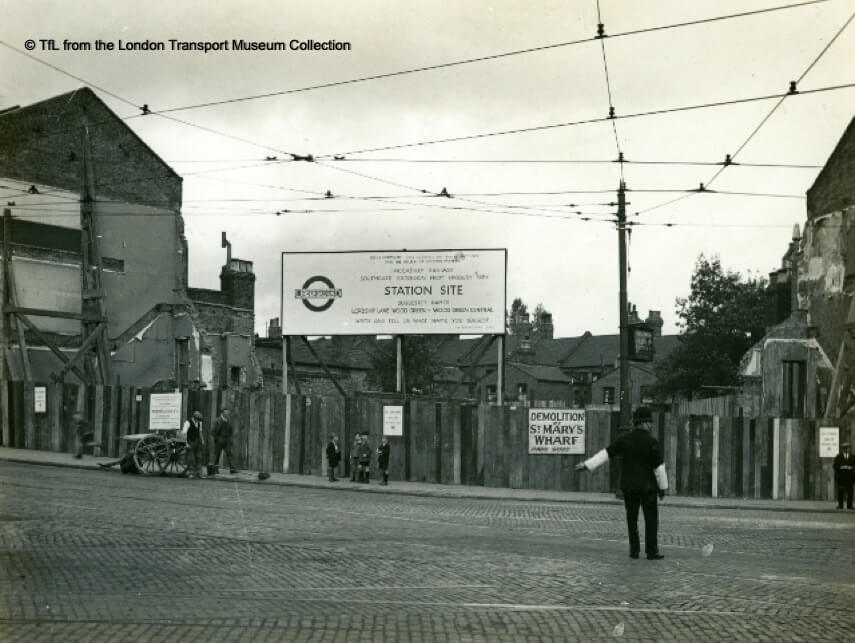Our articles on the development of the Piccadilly Line extension cover some of the commercial and political elements of the process, but here are a few of the logistical points of interest.

- Between Finsbury Park and Cockfosters the line covers 7.68 miles/12.35 km, of this 4.5 miles/7.24km was built in tubes.
- During construction, the average progress of the tunnelling was 51 rings or 85 ft/25.908 m a month.
- Manor House, Turnpike Lane and Bounds Green platforms are sited on subterranean humps, the severity of the prevailing gradients didn’t allow this at other stations.
- Running rails were 95lb bull-head type in 90 or 65ft lengths – previously standard lengths were 42ft in tube and 45ft in the open.
- The escalators in the new stations moved at a faster rate than previously, aiming at between 100 – 150 feet per minute, the first escalators ran at 80 feet per minute.
- The tunnelling contractors, Charles Brand and Son, subcontracted the removal of the clay spoil to the the St Mary’s Wharf Cartage Company in Paddington.
- The public were invited to vote for names for the new stations, the results were announced in December 1930 without disclosing the voting figures. Manor House was never in question but alternatives for Turnpike Lane were Ducketts Green and Wood Green was, in the early planning stages, known as Lordship Lane.